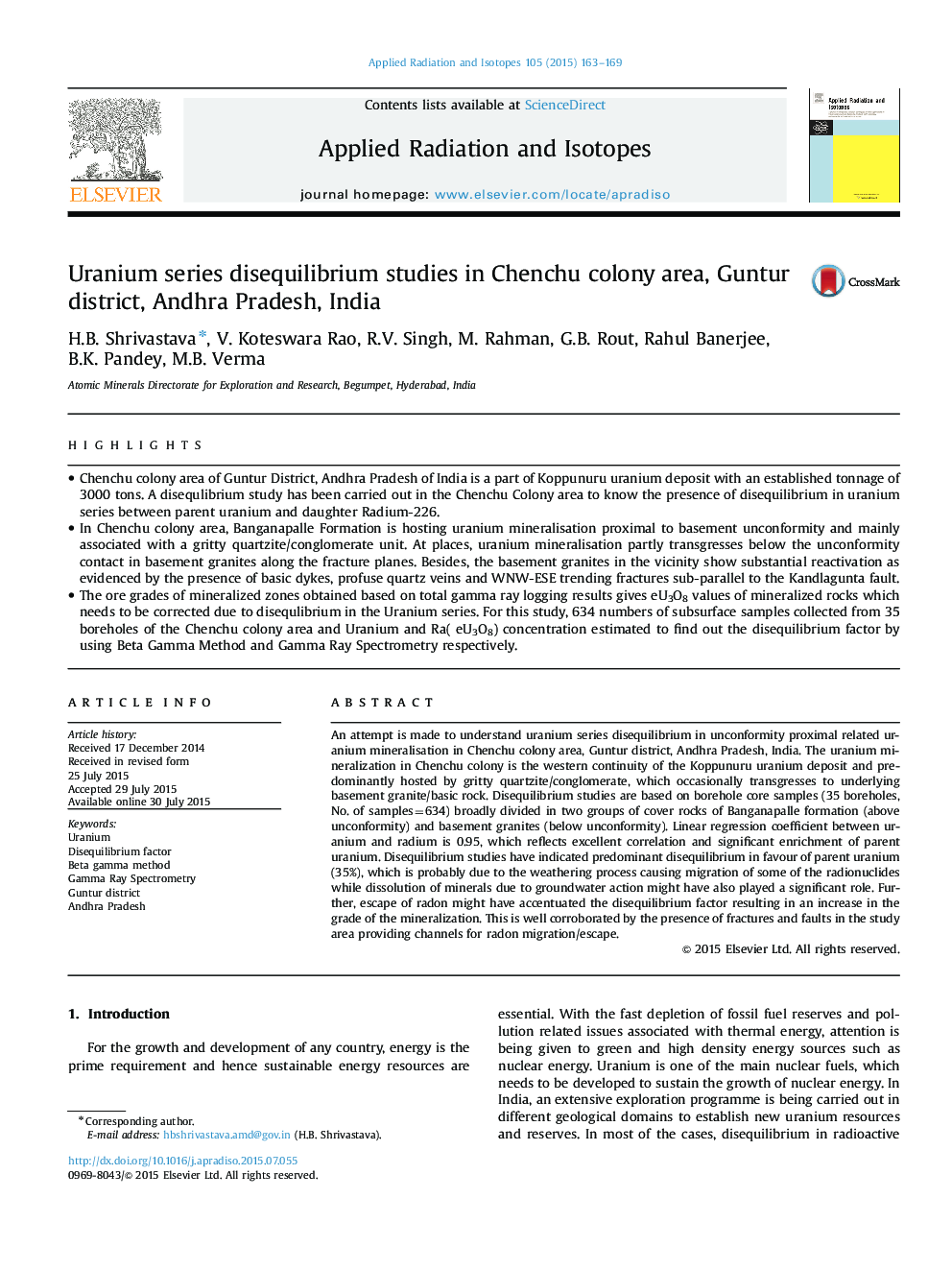| کد مقاله | کد نشریه | سال انتشار | مقاله انگلیسی | نسخه تمام متن |
|---|---|---|---|---|
| 1875825 | 1532092 | 2015 | 7 صفحه PDF | دانلود رایگان |

• Chenchu colony area of Guntur District, Andhra Pradesh of India is a part of Koppunuru uranium deposit with an established tonnage of 3000 tons. A disequlibrium study has been carried out in the Chenchu Colony area to know the presence of disequilibrium in uranium series between parent uranium and daughter Radium-226.
• In Chenchu colony area, Banganapalle Formation is hosting uranium mineralisation proximal to basement unconformity and mainly associated with a gritty quartzite/conglomerate unit. At places, uranium mineralisation partly transgresses below the unconformity contact in basement granites along the fracture planes. Besides, the basement granites in the vicinity show substantial reactivation as evidenced by the presence of basic dykes, profuse quartz veins and WNW-ESE trending fractures sub-parallel to the Kandlagunta fault.
• The ore grades of mineralized zones obtained based on total gamma ray logging results gives eU3O8 values of mineralized rocks which needs to be corrected due to disequlibrium in the Uranium series. For this study, 634 numbers of subsurface samples collected from 35 boreholes of the Chenchu colony area and Uranium and Ra( eU3O8) concentration estimated to find out the disequilibrium factor by using Beta Gamma Method and Gamma Ray Spectrometry respectively.
An attempt is made to understand uranium series disequilibrium in unconformity proximal related uranium mineralisation in Chenchu colony area, Guntur district, Andhra Pradesh, India. The uranium mineralization in Chenchu colony is the western continuity of the Koppunuru uranium deposit and predominantly hosted by gritty quartzite/conglomerate, which occasionally transgresses to underlying basement granite/basic rock. Disequilibrium studies are based on borehole core samples (35 boreholes, No. of samples=634) broadly divided in two groups of cover rocks of Banganapalle formation (above unconformity) and basement granites (below unconformity). Linear regression coefficient between uranium and radium is 0.95, which reflects excellent correlation and significant enrichment of parent uranium. Disequilibrium studies have indicated predominant disequilibrium in favour of parent uranium (35%), which is probably due to the weathering process causing migration of some of the radionuclides while dissolution of minerals due to groundwater action might have also played a significant role. Further, escape of radon might have accentuated the disequilibrium factor resulting in an increase in the grade of the mineralization. This is well corroborated by the presence of fractures and faults in the study area providing channels for radon migration/escape.
Journal: Applied Radiation and Isotopes - Volume 105, November 2015, Pages 163–169